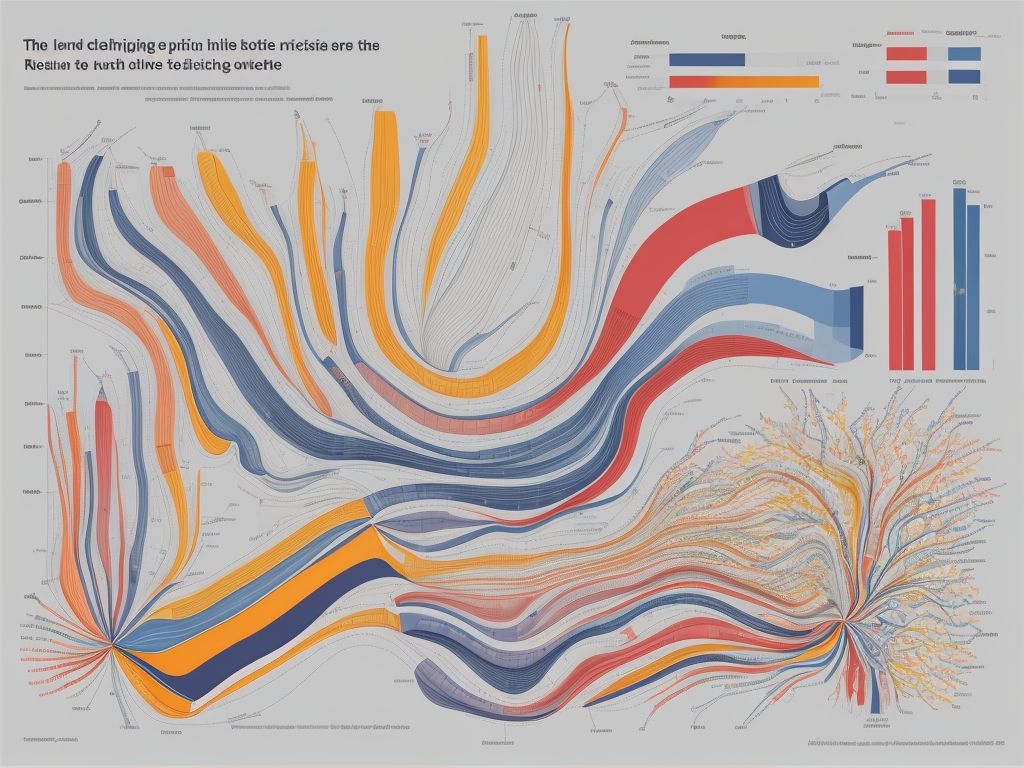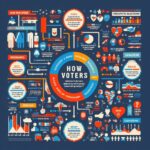Siena College Polls: The Key to Understanding Voter Behavior in New York
Overview of Siena College Polls
Siena College polls are renowned for their accuracy and reliability in gauging public opinion on various political issues. With a history of conducting polls in New York State since 1982, Siena College Polls have become a staple in political analysis and decision-making processes. The polls cover a range of topics, from candidate popularity to policy preferences, providing valuable insights into the opinions of New York residents.
One of the key strengths of Siena College Polls is their rigorous methodology, which ensures a representative sample of the population is surveyed. By employing random digit dialing and utilizing live callers rather than automated systems, Siena College Polls maintain a high level of accuracy and credibility in their findings. This dedication to methodological integrity has solidified Siena College’s reputation as a trustworthy source for political polling data.
The Importance of Polling in Political Analysis
Polling plays a crucial role in providing a snapshot of public opinion and gauging voter preferences during political campaigns. It helps politicians, analysts, and the general public understand the prevailing sentiments and trends that may shape election outcomes. By collecting data on various issues and candidates through surveys, polling enables a more informed approach to strategizing and decision-making in the political arena.
Furthermore, polling serves as a valuable tool for assessing the effectiveness of political messaging and campaign strategies. By tracking shifts in public opinion over time, it offers insights into the impact of different events and factors on voter behavior. This allows candidates and parties to adapt their approaches and policies to better resonate with their target audience, ultimately influencing the outcome of elections.
Understanding the Methodology Behind Siena College Polls
Siena College Polls are widely regarded for their rigorous methodology in collecting and analyzing data on voter opinions. The polling process typically involves contacting a representative sample of registered voters in New York through telephone interviews. These interviews are conducted by trained professionals who follow a standardized script to ensure consistency in the questions asked and answers recorded.
Once the data is gathered, it is carefully weighted to ensure that the sample accurately reflects the demographic composition of the state’s electorate. This weighting process helps account for any potential biases in the sample and ensures that the poll results provide a reliable snapshot of public opinion. By adhering to these methodological standards, Siena College Polls strive to offer an accurate and unbiased assessment of voter attitudes and preferences leading up to elections.
Key Findings from Recent Siena College Polls
In the latest Siena College polls, it was revealed that incumbent Governor Smith maintains a slight lead over his challenger, Mayor Johnson, with a margin of 4 percentage points. This finding has generated significant interest among political analysts and campaign strategists, as the race is expected to be tightly contested until election day.
Additionally, the polls indicate a growing concern among New York voters regarding economic issues, with 62% expressing dissatisfaction with the current state of the economy. This sentiment is likely to shape the candidates’ platforms and messaging in the upcoming weeks as they strive to address voter concerns and gain support.
Factors Influencing Voter Behavior in New York
In New York, voter behavior is influenced by a multitude of factors ranging from demographic characteristics to political ideologies. Political affiliation plays a significant role in shaping how individuals choose to exercise their voting rights. Whether voters identify as Democrats, Republicans, or independents can sway their decisions at the ballot box.
Additionally, historical voting patterns and socioeconomic status impact voter behavior in New York. The state’s urban and rural divide, as well as the diversity of its population, contribute to the complexity of voter preferences. Factors such as education level, income, and age also play a pivotal role in determining how individuals engage with the political process.
Comparing Siena College Polls to Other Polling Organizations
Siena College Polls are renowned for their accuracy and reliability in gauging voter preferences and trends in New York. These polls often closely align with actual election results, making them a valuable resource for political analysts and campaign strategists. One key aspect that sets Siena College Polls apart from other polling organizations is their detailed methodology, which emphasizes random sampling and unbiased questioning to ensure the validity of the results.
In contrast, some other polling organizations may employ different methodologies that could lead to variations in their findings compared to Siena College Polls. Factors such as sample size, sampling techniques, question wording, and timing of the polls can all impact the results and the level of confidence in the data. While each polling organization has its strengths and limitations, comparing the Siena College Polls to others can provide a comprehensive view of voter sentiments and help in understanding the nuances of public opinion in New York.
The Impact of Siena College Polls on Political Campaigns
Siena College polls have become a pivotal tool in shaping the strategy and direction of political campaigns in New York. By providing real-time data on voter preferences and opinions, these polls offer crucial insights that help candidates tailor their messages and target key demographics effectively. The impact of Siena College polls is not only felt during election seasons but also in the decision-making processes of political parties and candidates seeking to understand the pulse of the electorate.
In a competitive political landscape like New York, where small margins can determine the outcome of an election, the accuracy and reliability of Siena College polls play a significant role in guiding campaign decisions. The influence of these polls extends beyond mere numbers, influencing campaign tactics, resource allocation, and messaging strategies. As candidates navigate the complex dynamics of voter sentiment, Siena College polls serve as a compass to steer their campaigns towards success.
Challenges Faced by Pollsters in Predicting Voter Behavior
Pollsters encounter numerous challenges when attempting to predict voter behavior accurately. One primary obstacle is the issue of nonresponse bias, where individuals chosen to participate in a poll may refuse to answer questions or be unavailable for polling entirely. This can lead to skewed results that do not accurately reflect the opinions of the broader population. Additionally, the wording of survey questions can influence how respondents answer, potentially leading to misleading data that does not capture the true sentiment of voters.
Another significant challenge pollsters face is the ever-changing nature of voter preferences and behaviors. Political landscapes are constantly evolving, making it difficult to predict how individuals will vote in future elections. Factors such as shifting demographics, unforeseen events, and changing priorities all contribute to the complexity of accurately forecasting voter behavior. As a result, pollsters must continuously adapt their methodologies to account for these fluctuations and strive to provide the most accurate insights possible.
Ethical Considerations in Conducting Polls
When conducting polls, pollsters must adhere to ethical guidelines to ensure the integrity and validity of the results. One key ethical consideration is the importance of obtaining informed consent from participants. Pollsters must clearly explain the purpose of the poll, how the data will be used, and ensure that participants understand their rights in participating.
Additionally, maintaining respondent confidentiality is vital in upholding ethical standards in polling. Pollsters must safeguard the anonymity of participants and ensure that individual responses cannot be traced back to specific individuals. Respecting participant privacy builds trust and encourages honest and accurate responses, ultimately leading to more reliable poll results.
Future Trends in Polling and Voter Behavior Analysis
As technology continues to advance, future trends in polling and voter behavior analysis will likely see an increased reliance on data analytics and artificial intelligence. These tools have the potential to provide more accurate and real-time insights into voter sentiment and behavior, allowing for more targeted and effective campaign strategies. Additionally, the use of social media data and sentiment analysis is expected to play a significant role in understanding and predicting voter behavior.
Furthermore, the shift towards online and mobile polling methods is expected to grow, with traditional phone polling becoming less common. This shift is driven by the need to reach a more diverse and tech-savvy population, as well as the increasing difficulty of reaching respondents via landline phones. Additionally, the integration of big data and machine learning algorithms in polling methodology is anticipated to revolutionize how we gather and analyze voter data, leading to more accurate and comprehensive insights into voter behavior patterns.
- University of Massachusetts Amherst Polls: Analyzing Voter Behavior in Massachusetts - January 5, 2025
- Polling Insights from University of Massachusetts Lowell: A Close Look at Voter Shifts - January 5, 2025
- University of New Hampshire Polls: Analyzing Key Presidential Primary Data - January 5, 2025










